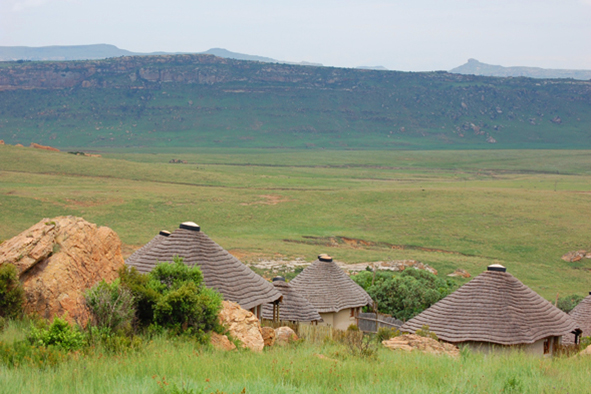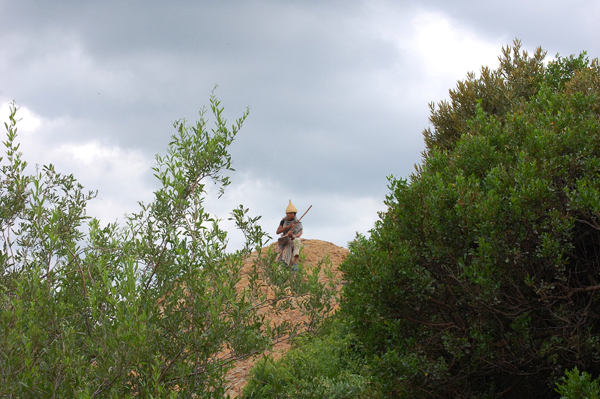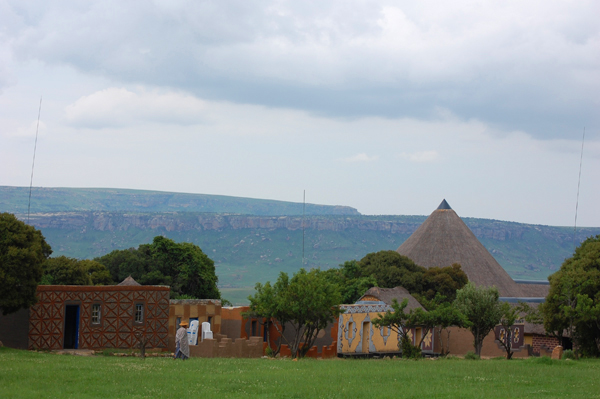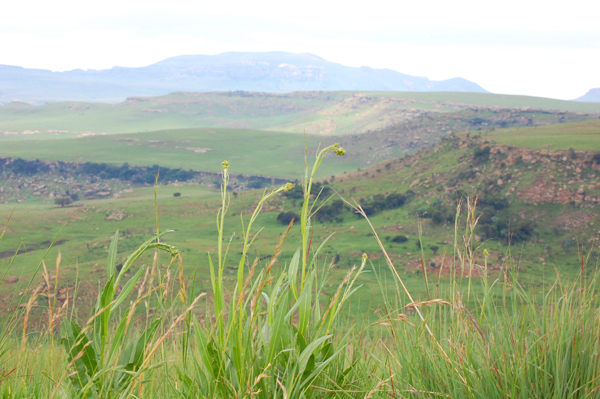Set inside an ancient national park in South Africa’s Free State, on the border of Lesotho, there is a traditional Basotho village showcasing the evolution of the tribe over hundreds of years and their authentic foods, drinks, songs, and more.
The barricade shut behind us, locking us into an undulating landscape of sandstone cliffs that glowed a muted golden colour cast by the low-slung, morning sun. Ahead, the road carved a twisting route through the imposing peaks, belittled by what, at one point many, many years ago, were the banks of a wide, thunderous river.
Jagged, umber cliff-faces peered down at the juxtaposition of tiny modern-day automobiles coasting through the pre-historic land, whilst various animals – wildebeest, blesbok, springbok, and zebra, amongst others – grazed lazily on the sweeping grasslands that connected each peak.
This area is known as the Golden Gate National Park, named after the golden hue of the sandstone cliffs, and sits at the base of the Maluti Mountains in South Africa’s Free State, close to the border of neighbouring Lesotho. Sprawling out across almost 12,000 hectares, it harbours an almost surreal landscape full of vibrant colour and life; the rain-ripened grass looked like a carpet of thick, bouncy moss, and the stained, sandstone cliffs resembled the pink, tender meat of a rare steak.
As we picked our way along roads cut with hairpin bends, the land became flatter and flatter until we were greeted by a plain that stretched out from one horizon to the next. The indicator clicked on to the right, and we began to make our way towards a huddle of pointy huts in the distance. As we neared, I noticed a man sitting on the roof of one of them, a straw-like hat perched on his head, a strange instrument pursed between his lips.
This was our destination, a traditional Basotho village tucked away in an ancient landscape. Fitting really, considering the tribe is centuries-old, dating back to the 16th century and beyond.
Surrounded by terracotta walls and lush trees that overlooked humped huts, the authentic replica of a village serves to emanate the culture and heritage of one of the region’s oldest tribes. Acting as a tunnel through time, each century was characterised by a new set of huts and an interactive display of evolving cultural rituals to show the development of Basotho people alongside the region’s troublesome political history.
We were greeted by a man sweeping the concrete car park in a high-vis jacket – not quite what I had been expecting, but that was about to change.
Carving a Path of Their Own
The Basotho people are from neighbouring Lesotho, a tiny country that’s plonked in the middle of South Africa. In its early years it was known as Basutoland and formed a part of a larger South Africa, but it garnered independence after the Dutch invaded. So determined were the Basotho people to protect their heritage and land, they annexed themselves off from South Africa and, in 1966, Lesotho became a country in its own right.
The man in the high-vis jacket was quickly replaced by a dreadlocked guide who ushered us into the khotla, a communal area for the men of the tribe (I was very nearly not allowed to enter). There, we sat alongside the leader, who passed us a goblet of traditional Basotho beer – a thick, creamy concoction that leaves a sour aftertaste. It’s an acquired taste, I think, but I had a few glugs anyway under the watchful eye of two male members of the tribe.
Afterwards, still with the bitter taste of beer in our mouths, we were led to the 16th century ngaka – the tribe’s dedicated healer. Unlike a visit to the doctors today, a visit to the ngaka comes with a whole host of games to determine ailments and illnesses (shaking stones and throwing them out in front of me felt like a dubious way to unravel my health problems, and the spell cast afterwards left me feeling even more unsettled).
Having been tested and teased by the local witch doctor, we were led forwards in time to the 17th, 18th, and 19th centuries, where the huts grew decidedly bigger and stronger. The women of the huts greeted us with morsels of traditional food – predominantly maize and corn – and then went back to their wifely duties. Basotho men in the earlier centuries held onto several wives at one time, each of whom was awarded her own tasks around the house, from cooking and cleaning to watching the mishmash of children.
I later learnt that present day Basotho men only take one wife who is allowed to live with him in the same hut. Despite the age-old traditions that the tribe are determined to hold on to, there are glimpses of new-age thinking in there somewhere. But before I had a chance to consider the Basotho tribe in the modern day world (did they have technology? Jobs that weren’t farming, growing, or cleaning?) I was shown into a hut filled with lines of heavy leather garments. A Basotho woman emerged from a dark corner, wielding a cape made from local boks and layers of clothing to drape all over me – one layer for every stage of my female life.
By the end I was left weighed down and wondering how the women of the earlier tribes managed to get anything done when hidden away beneath layers and layers of thick leather.
And, when we emerged into the Basotho’s 21st century surroundings, I wondered whether the women were able to dance in their makeshift gowns to the lively music that greeted us. Two men perched on the doorstep of a colourful modern-day hut, one expertly playing the Rangoon, and the other on the Lesiba, both of which are traditional Basotho instruments.
As I joined in dancing and clapping with the tribe who I had travelled through centuries with, I wondered what they thought about their journey to the 21st century, particularly the guy wearing the high-vis jacket sweeping the car park for curious visitors.



